3D printing can produce some rough parts, but when slicer settings are tuned and the part is post-processed, you can make some very visually-appealing models. Vases are the perfect way to highlight how 3D printing can create stunning parts.
Besides being used to showcase how great 3D printing is, vases can obviously hold flowers, too! You can use them as practical decor around your living space.
In this article, we’ll present you with some amazing 3D printable vase designs. For each model, we’ll provide a description of the project, some printing tips, and of course, where you can download it.
If you see something you like but don’t have a 3D printing setup at home, try Craftcloud. The extensive selection of materials and printing options available through our partners will give you quite a bit of design freedom to meet your home decor needs.
Now, let’s check out the picks!
Geometric
We’re drawn to geometric shapes and patterns, and they’re all around us. The following vases feature these types of designs, including triangles, hexagons, and more.
Mesmerizing
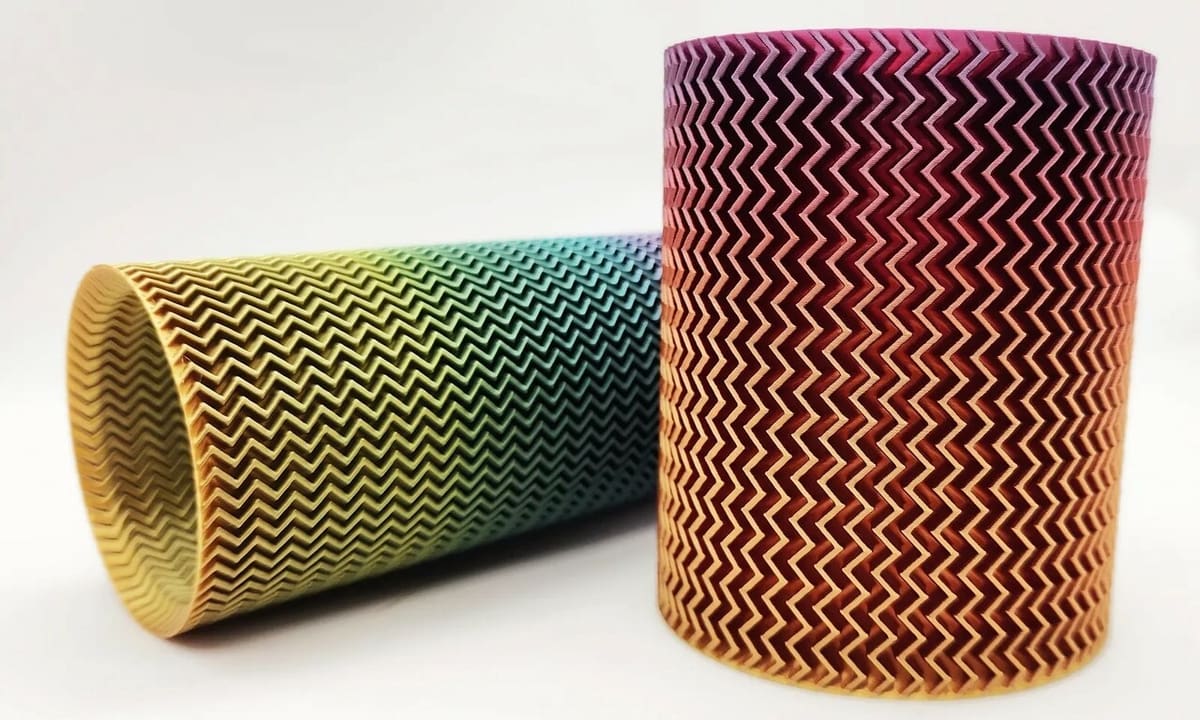
With this option, you don’t just have a zig-zag style vase but an entire collection of vases in various styles and patterns. These vases boast a modern look and will look stunning with a sparkling or metallic filament.
This model is designed to be printed in “spiral vase mode,” which is a feature found in Cura and other slicers that greatly simplifies the process of printing vases. The textured effect can be observed both on the outside and inside of the vase.
- Who designed it? TripleGWorkshop
- How printable/popular is it? Even though this model was posted relatively recently, it already has 12 makes, 3 remixes, and over 850 downloads.
- Where to find it? Printables
Ople
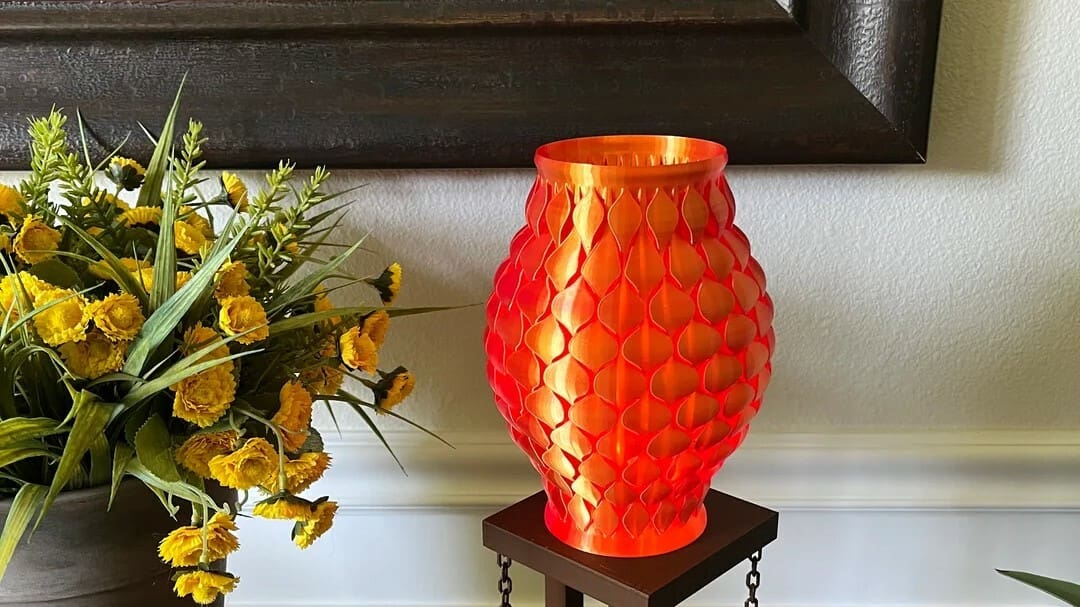
This vase promises smooth lines packed into an extremely elegant and modern design. The author created nearly 200 versions before arriving at this model.
The designer’s primary goal was to create a vase that could be printed with a single perimeter while giving the illusion of being multi-perimeter. There’s also a version without holes that retains the internal ribs but can be made without the vase mode feature. There are no guarantees, but the author states that the model has no gaps and theoretically can hold water.
- Who designed it? Nat
- How printable/popular is it? More than 16,000 downloads and 393 makes are proof that it’s a popular and easy-to-make vase.
- Where to find it? Printables
Honeycomb

This honeycomb vase has an extruding honeycomb geometry texture that makes for excellent surface visuals. The vase was designed in Blender, and the designer provided the Blender file on the project page if you want to make your own adjustments. There are also STL files that enable you to print this model either with or without the vase mode print setting.
While the designer didn’t provide any specific print settings, quite a few makers printed the vase in PLA with a 0.2-mm layer height and 20-25% infill.
- Who designed it? eggnot
- How printable/popular is it? This honeycomb vase model has 616 makes and 18 remixes. With this popularity, we expect that the model is pretty easy to print.
- Where to find it? Thingiverse
Twisted Hexagon
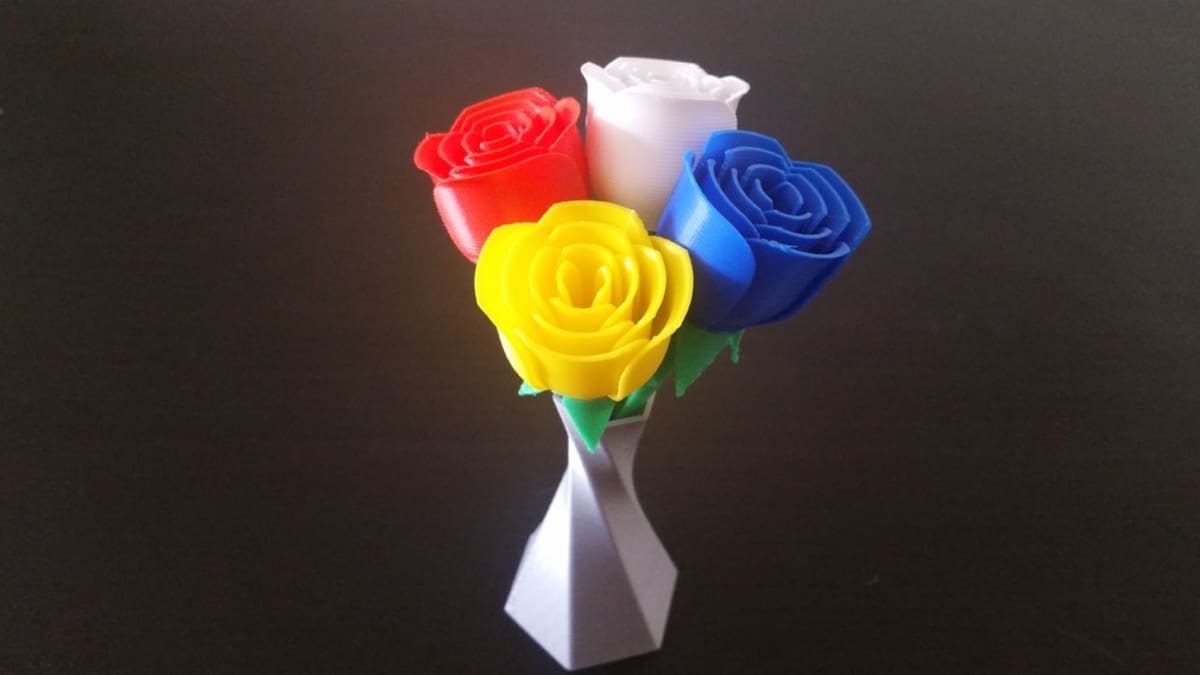
Designed in Autodesk Fusion (previously Fusion 360), this next vase is a hexagon twisted and raised along the Z-axis, making for a stunning look. It could also be used as a pen or toothbrush holder.
The creator of this design stated that they printed the vase in ABS and PLA. One maker listed that they printed the model with 15% infill and a raft.
- Who designed it? bkpsu
- How printable/popular is it? This twisted hexagon vase has 35 makes, a remix, and over 19,000 downloads.
- Where to find it? Thingiverse
Double-Twisted
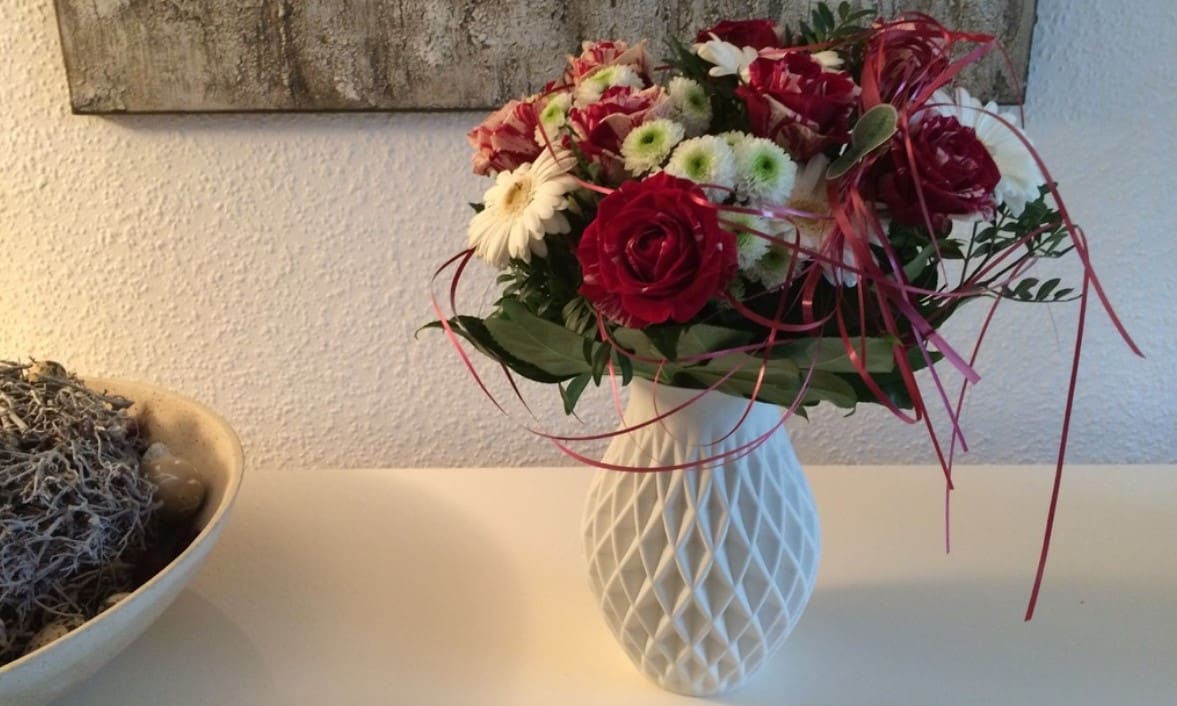
This double-twisted vase contains spirals that move in opposite directions and intersect, yielding an impressive look. The designer stated that the model was made by taking one spiral vase and placing it over another at an offset rotation angle. The original model is solid, so make sure you print it in vase mode.
The creator of this vase mentioned that when adjusting the vase mode settings, you should use two layers for the wall thickness and a 1-mm bottom thickness.
- Who designed it? FabLabMaastricht
- How printable/popular is it? This double-twisted model has almost 200 recorded makes, 5 remixes, as well as over 67,000 downloads.
- Where to find it? Thingiverse
Mid-Century Modern
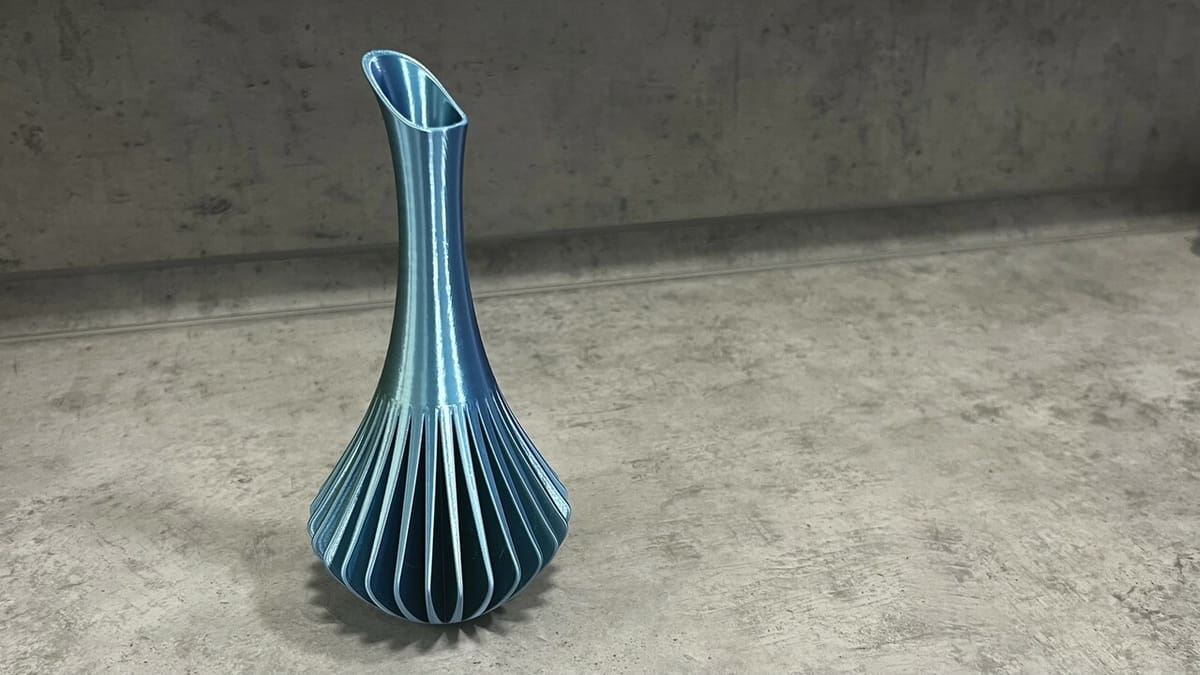
The mid-century modern (MCM) vase from Hendricks Design is a charming and versatile choice for those looking to 3D print something stylish and functional. The ease of printing is one of the great attractions of this design, given that it doesn’t require supports and can be scaled according to different needs – all the while maintaining the integrity of the design.
The MCM Vase is the type of project that is sure to impress your friends and family, as well as being a practical and beautiful addition to your home, with the combination of a pattern at the bottom that seems to flow upwards.
To guarantee an impeccable result when printing this model, use a 0.2 mm layer height, with two walls and 15% infill. If you’re looking for even faster printing, the adaptive setting with a 0.28-mm layer height is also a great choice, maintaining visual quality without compromising time. Many have recommended adjusting the infill percentage to reduce filament usage, especially at the base.
- Who designed it? HendricksDesign
- How printable/popular is it? With 9,000 downloads and 5,700 prints according to the platform, this vase is definitely simple and easy to make.
- Where to find it? MakerWorld
Fluid
Vases in this category look almost fluid, as if they’re flowing or have some kind of movement.
Interlocking Toroidal
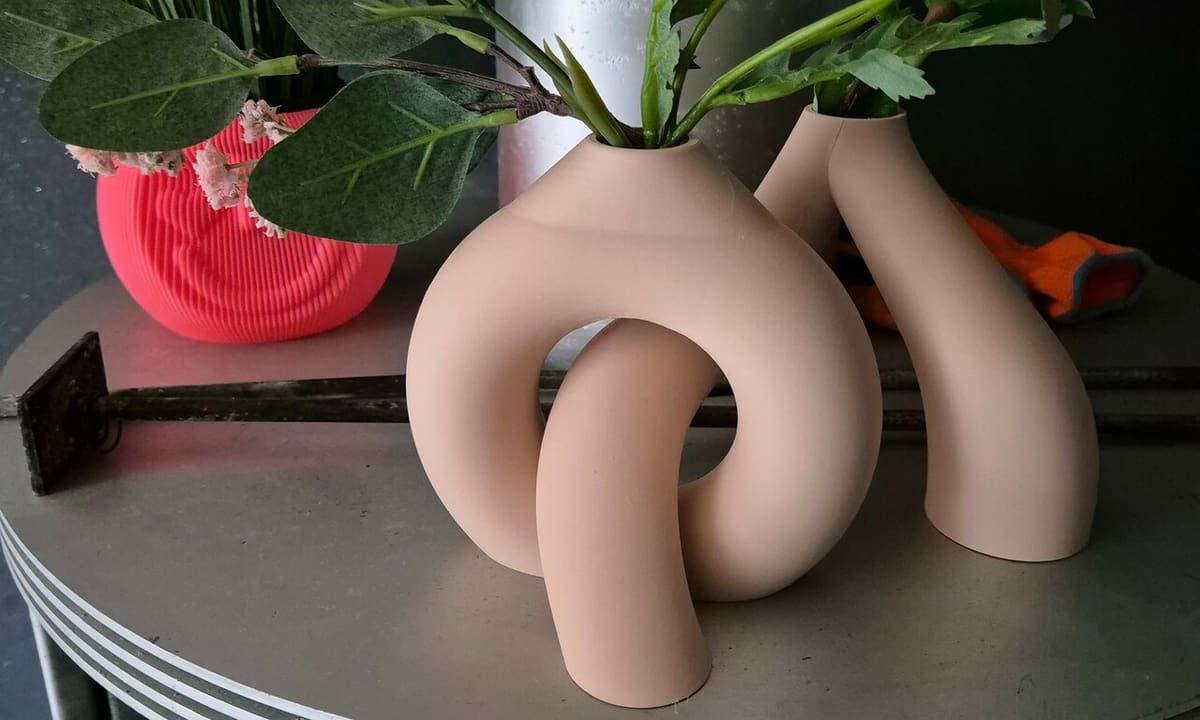
Sometimes, your environment calls for something different, something that isn’t a common and expected shape but still subtle, creative, and elegant. This vase can stand out in any space with its voluminous and intriguing shapes, which can also be positioned in different ways, as the vases aren’t meant to be glued together.
Some print configurations are recommended, such as a layer height of 0.2 mm, two outer walls, and 7% infill. Two important tips are to enable custom support to ensure all complex parts are printed correctly, and using fuzzy skin can help hide layer lines. User reviews indicate that the choice of filament is also crucial, with marble and silk PLA adding an extra touch of elegance.
- Who designed it? Collecticraft
- How printable/popular is it? With more than 2,100 downloads and 1,500 prints according to MakerWorld, its popularity is evident, but you need to pay attention and use a good configuration to avoid errors.
- Where to find it? MakerWorld
Bloom
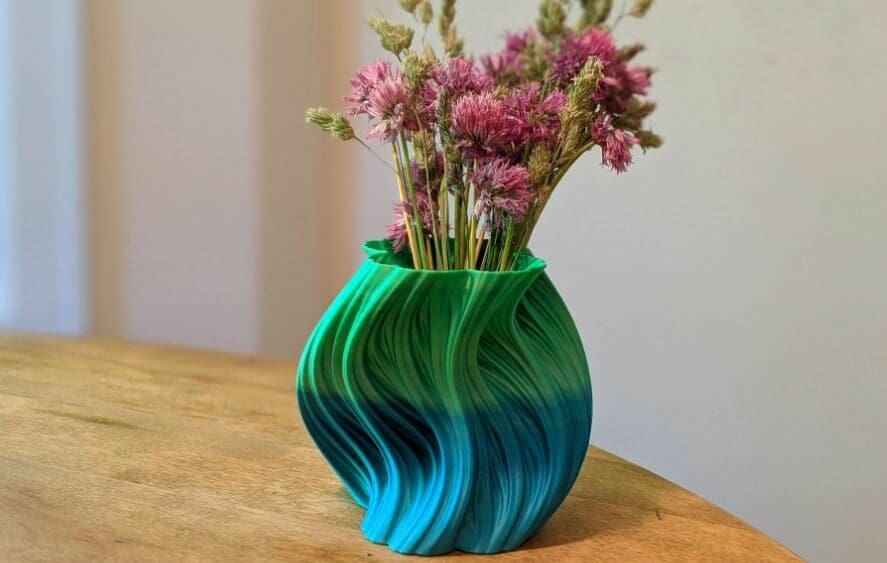
This model was designed by virtox, a designer who has made many other vases. Featuring many complex curvatures, this vase looks like it’s alive! The design is available as a solid (for printing in vase mode) and as a shell.
The designer didn’t provide too much printing information but did list what settings they used to print the vase. These include a 0.3-mm layer height, no supports activated, and PLA filament.
- Who designed it? virtox
- How printable/popular is it? This vase model has 151 makes and has been downloaded about 59,000 times.
- Where to find it? Thingiverse
Ripple
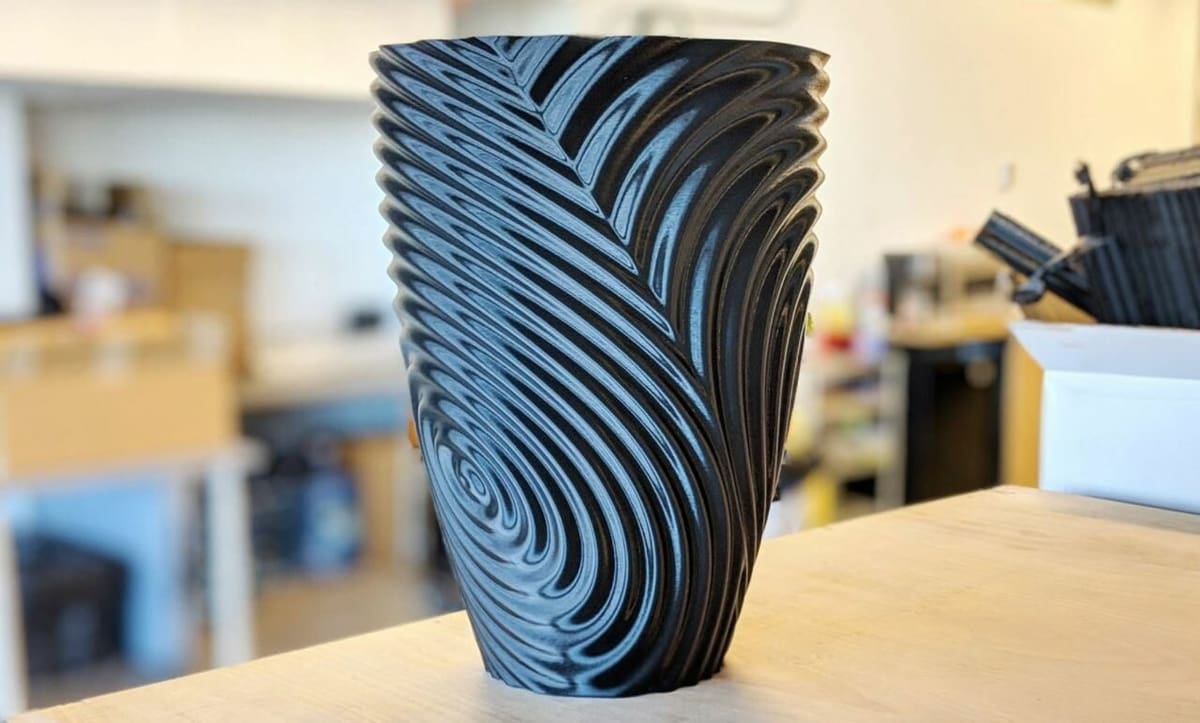
This vase has a distinct surface pattern similar to the ripple of waves in water. On the model, there are a few ripple areas that intersect to provide an even more dramatic look. When slicing the design, make sure you activate vase mode to shell the model so that it can function as a vase.
The designer didn’t provide any print settings, but standard ones should work just fine: a 0.2-mm layer height and a 50-mm/s print speed. As there are no overhangs, supports aren’t necessary.
Spiral

As you’ve probably noticed by now, spiral vases are very popular on Thingiverse and other 3D model repositories, and this project contains a few different spiral vases with different outer shapes. The model is already designed to print like a vase, but you could still activate vase mode to provide consistent extrusion.
The designer recommends printing the vases with a 0.35-mm diameter nozzle or a 0.35-mm extrusion width. One maker listed that they printed the model in PLA with a 0.24-mm layer height, 25% infill, and no supports.
- Who designed it? YSoft_be3D
- How printable/popular is it? This spiral vase has almost 380 recorded makes as well as over 191,000 downloads!
- Where to find it? Thingiverse
AuroraCurve Vase
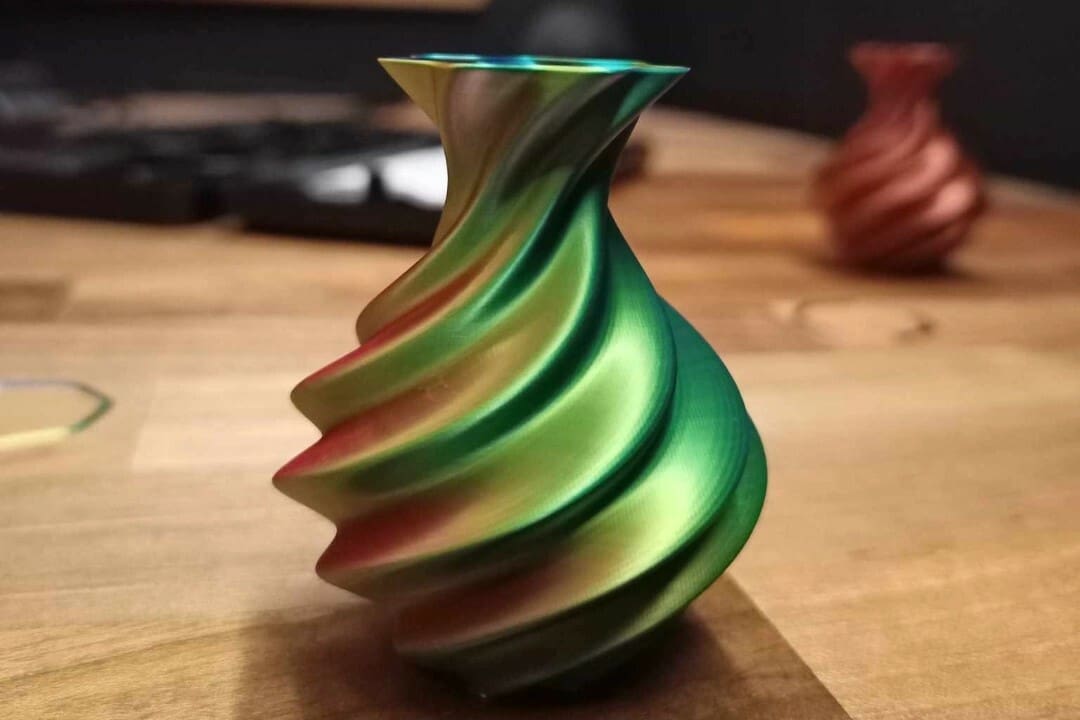
With its organic, fluid design, this vase not only serves as a functional container for flowers but also as an aesthetically pleasing centerpiece that can transform any room. The piece, 179 mm tall and 146 mm in diameter, can be sized as needed, and there’s the possibility of printing the model in “spiral mode” for a faster creation.
Depending on the settings you choose, printing this vase can take between 1.8 and 4.8 hours. Some users used three outer walls to increase waterproofing and reduced the speed to 40 mm/s to obtain results like the photo above. Needless to say, with the dazzling design, dual-color filaments will make the vase pop even more.
- Who designed it? 3Ddesignshop
- How printable/popular is it? 1,300 downloads and 922 prints, per MakerWorld, show that you can easily make one and impress your decor.
- Where to find it? MakerWorld
Vase 794
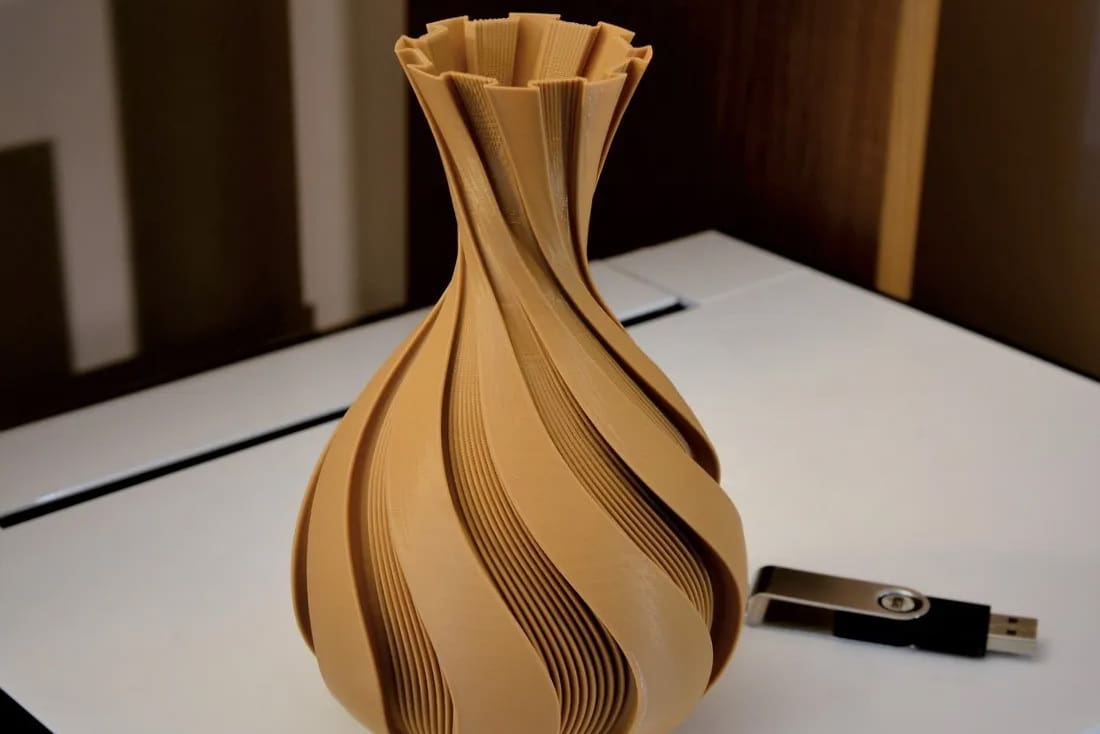
The fluidity of this vase is brought to life by the artist’s design, which mixes a perfect balance of smooth flow and sharp edges to balance everything out. With the popularity of this vase, we can see that this will go down as a fan favorite soon enough.
There have been quite a lot of people who have printed this in PETG to give it some strength. It’s quite fun to take the time and look at the different ways people have made this design their own, and you might get inspired to choose some dual-color or transparent filament for your own. Just don’t forget to set your slicer to vase mode before hitting print.
- Who designed it? xSteve
- How printable/popular is it? This vase has nearly 8,300 downloads and 95 makes.
- Where to find it? Printables
Minimalist
Home decor with minimal design is all the rage, and it’s pleasing to the eye due to its simplicity. The vases listed in this category are all minimalist and perfectly elegant.
Heart
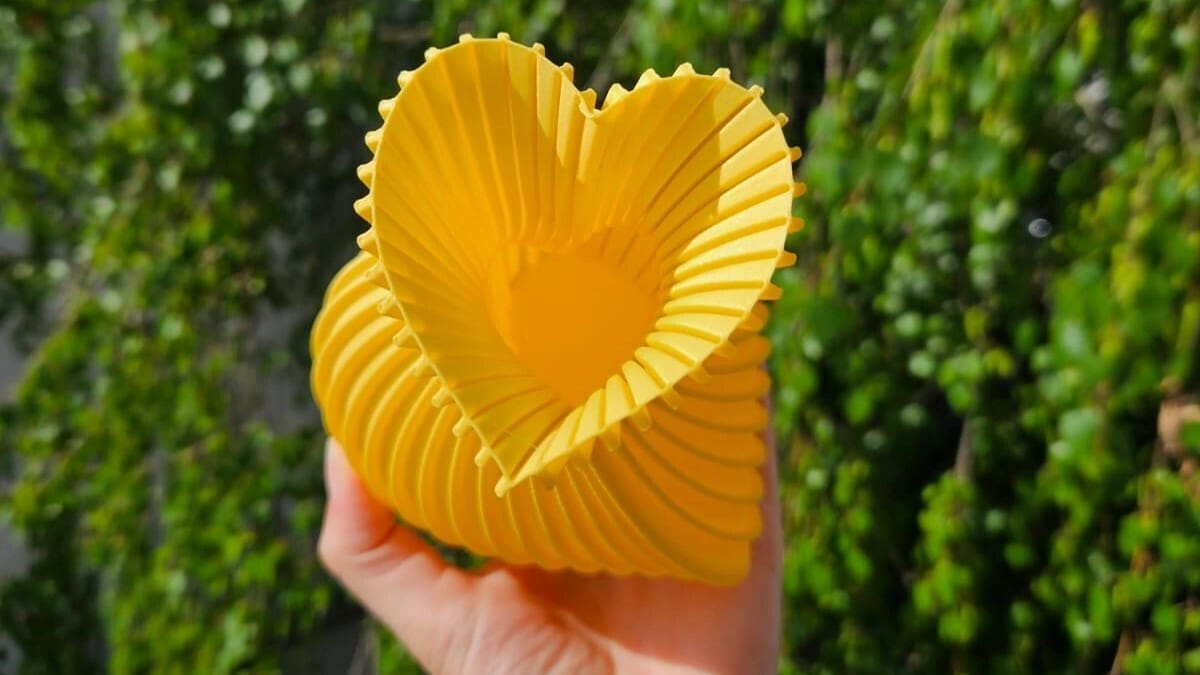
This is the option for lovers and incurable romantics. The heart shape with small folds brings a touch of charm and makes the texture interesting in any color, but especially with multicolored or sparkling filaments. It’s a perfect gift, and depending on the occasion, you won’t even need any wrapping.
The vase is 182 mm tall and 120 mm wide. Printing takes between 2 and 8.5 hours depending on the settings you use, but the designer recommends the standard option, which has a wall thickness of around 2 mm. The creator also included printing profiles for Bambu Lab’s A1 Mini, in the same size and scaled down to 60%, which is handy for the smaller bed print.
To make this romantic design waterproof, the designer recommends pausing at layer 580 and adding a plastic bottle bottom.
- Who designed it? zhakryuu
- How printable/popular is it? More than 1,200 people have already downloaded it, and many have shown off beautiful makes with colorful filaments.
- Where to find it? MakerWorld
Orbit

This model utilizes an interesting geometry with five spiraling curvatures surrounding the vase part, making for a great display piece. According to the designer’s description, the design is based on a complex geometric structure anchored by two dodecahedrons.
The original model is already a shell (hollow with one opening), so you won’t need to use vase mode on this design. Even though the structure has several overhangs, the angles are low enough that you shouldn’t need supports. There were no printing tips from the designer, but one community maker printed the vase with three shells, a 0.175-mm layer height, 5% infill, and a print speed of 60 mm/s.
- Who designed it? Clockspring
- How printable/popular is it? This orbit vase has 3 community prints, over 25,000 views, and more than 6,300 downloads.
- Where to find it? MyMiniFactory
Droplet

Next up is a vase in the shape of a water droplet. The design features a small hole at the top and a larger flat base so the vase doesn’t fall over.
One maker printed the model at 750% scale for a striking centerpiece, with a 0.2-mm layer height and 20% infill in PLA. The maker also mentioned that printing the vase with that significant scale took over three full days to print.
- Who designed it? vcrettenand
- How printable/popular is it? This rain droplet vase has 76 recorded makes and 4 remixes in varying scales, so the design is definitely possible to print.
- Where to find it? Thingiverse
Gyroid
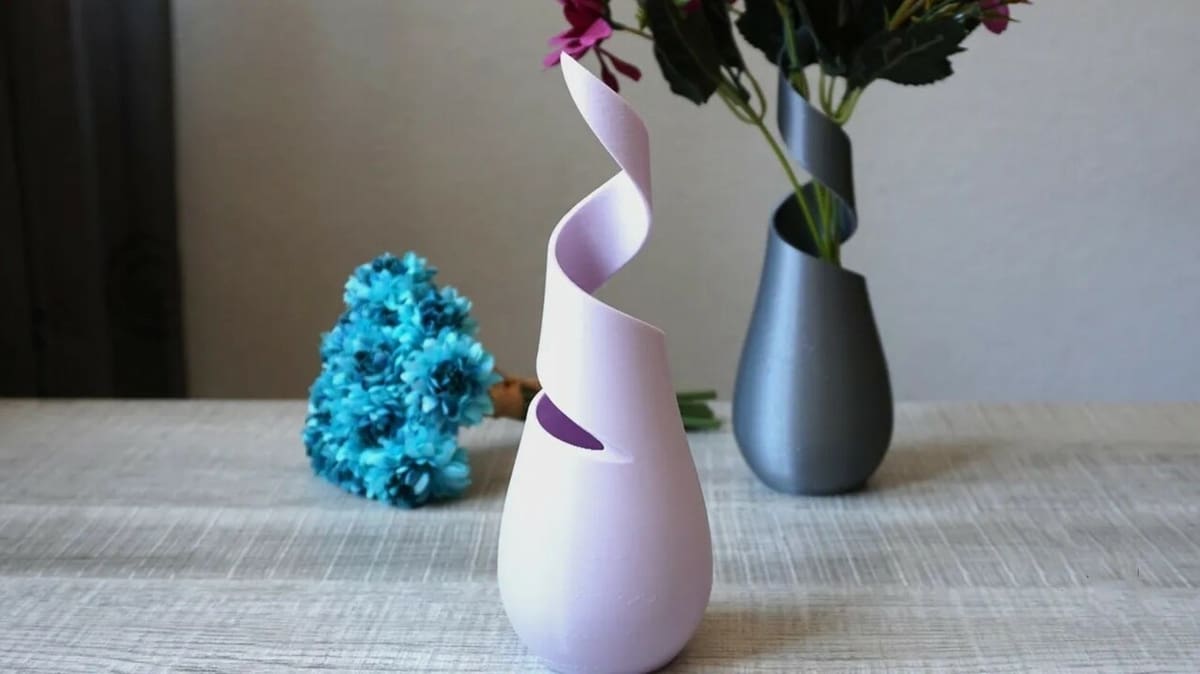
The gyroid is a great vase for decoration and holding flowers. It has a spiral structure and a design that’s simple but eye-catching. The shape of the vase resembles a twirled ribbon.
You can print this vase easily, as it’s a single model. If you have any concerns, check out any of the successful makes. There’s even a time-lapse video of one of the gyroid vases. Such videos are easy to capture and satisfying to watch!
- Who designed it? Area3dStudio
- How printable/popular is it? This vase has over 38,000 downloads and over 228 makes, with more than 8,500 likes on Printables and Thingiverse combined.
- Where to find it? Printables, Thingiverse
Outline
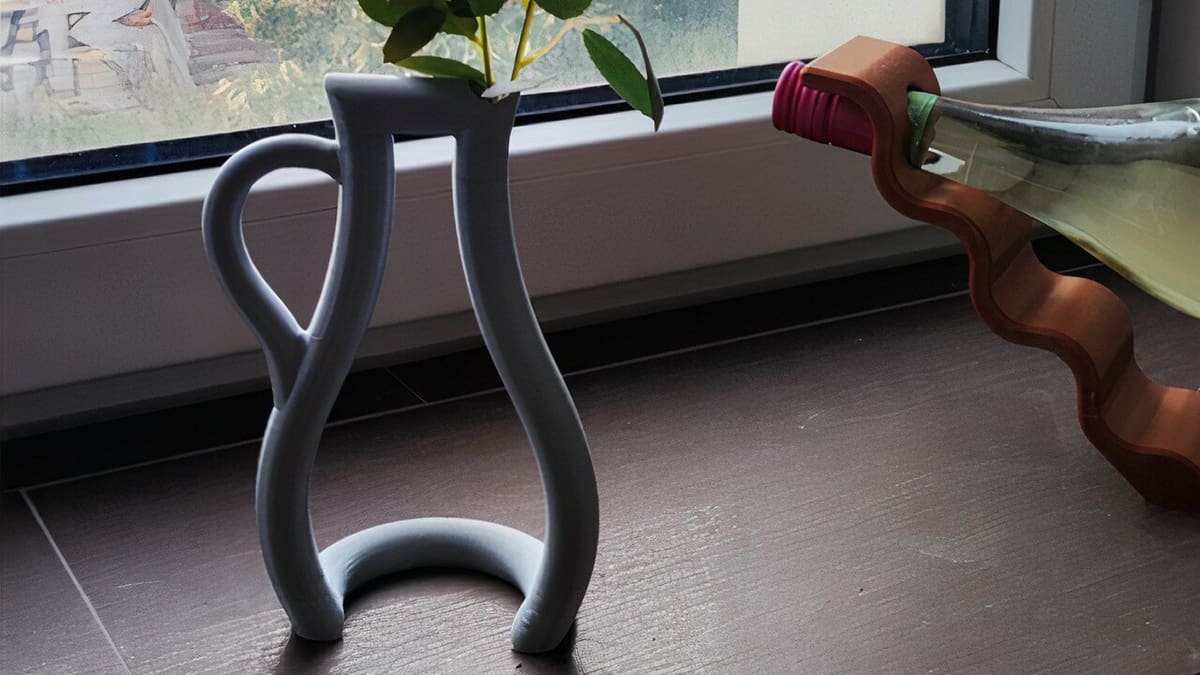
A vase that looks like a two-dimensional object at first glance can do all that a three-dimensional vase does. It has an opening through which you can pour water and put your flowers or plants on display. The design of this vase is quite similar to wire or silhouette vases.
You’ll definitely get compliments on this vase, as your guests will be intrigued and fascinated by it. This will surely be the case, since many makers in the community like the vase’s concept and design.
- Who designed it? mishkin2
- How printable/popular is it? This vase has 14 makes and around 1,650 downloads. While that may not seem like much, it’s quite popular with over 1,200 likes combined from the sites. One maker has printed it in clear resin.
- Where to find it? Cults, Printables, Thingiverse
Moon
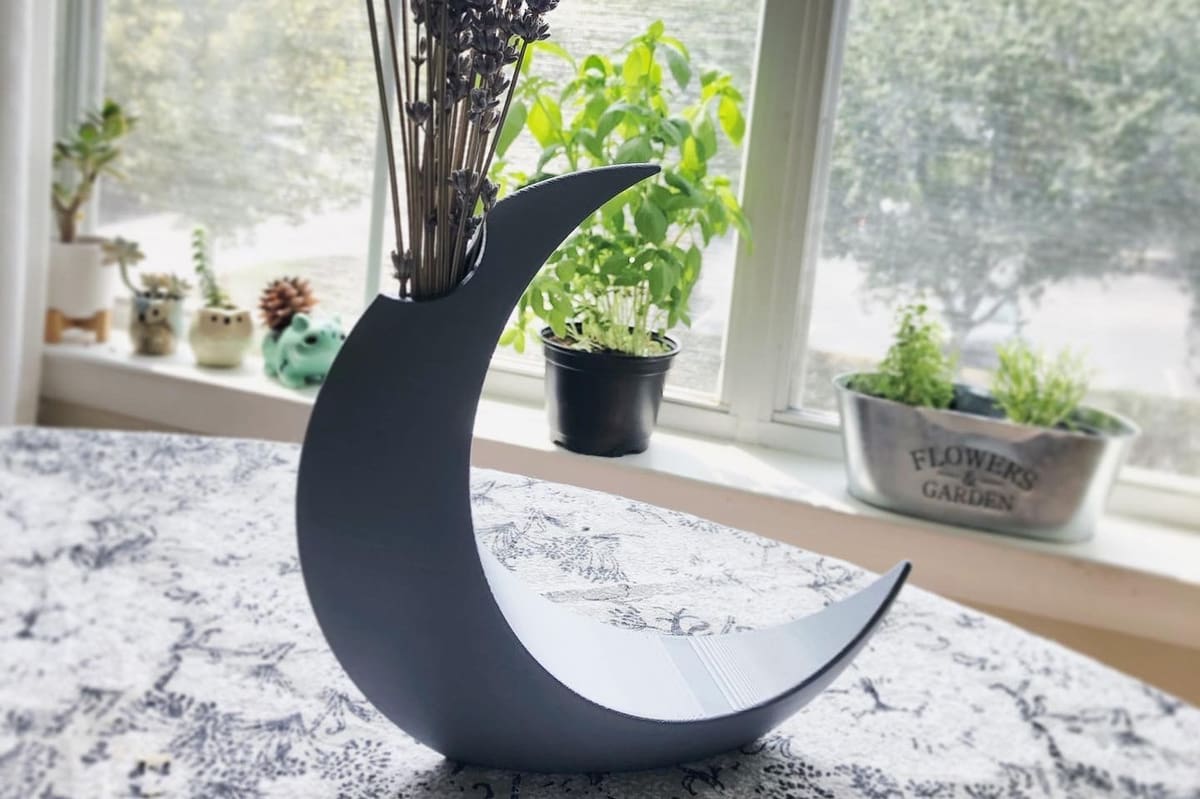
Let’s be honest here, not many vases are versatile enough to fit different interior design styles. However, we think this minimalist vase does the trick. It’s sure to be a huge hit for anyone who wants to surround their blooms with a mystical moon.
When it comes to overhangs, they can be tricky depending on the printer you’re using. So, you might want to use supports, but just make sure to set it to support build plate only. The reason for this is that the creator has included built-in supports for the top of the moon.
Mathematical
Mathematical structures and patterns, natural or man-made, are mesmerizing. These vases are based on either mathematical patterns, designs, or concepts.
Tetrahex Ripple
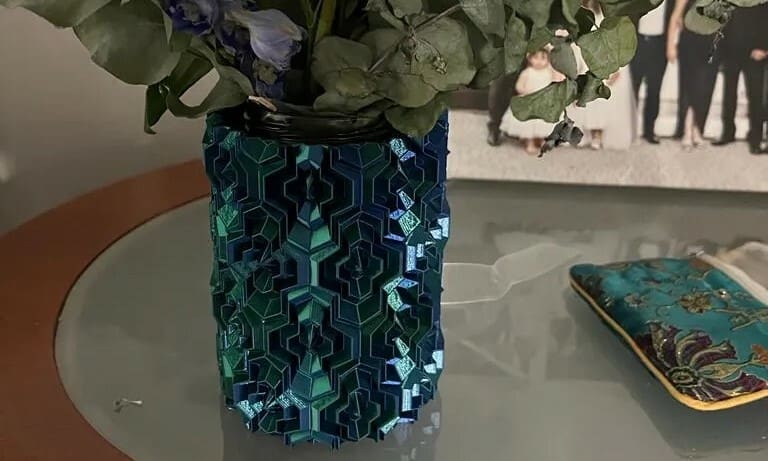
If you prefer a more striking effect, this may be the option you’ve been looking for. The appearance is certainly unique and enhances metallic and glittering filaments, giving the piece a wonderful shine.
For printing, it’s recommended to use 0% infill, 0 top layers, and 3 outer walls. Even if you use regular filament, you’ll achieve surprising and exciting results, but the prints with metallic and glittering filaments are truly jaw-dropping.
- Who designed it? ChrisTheViolaNerd
- How printable/popular is it? With an impressive 15,000 downloads and 269 makes, this vase is definitely a good choice to consider.
- Where to find it? Printables
Klein
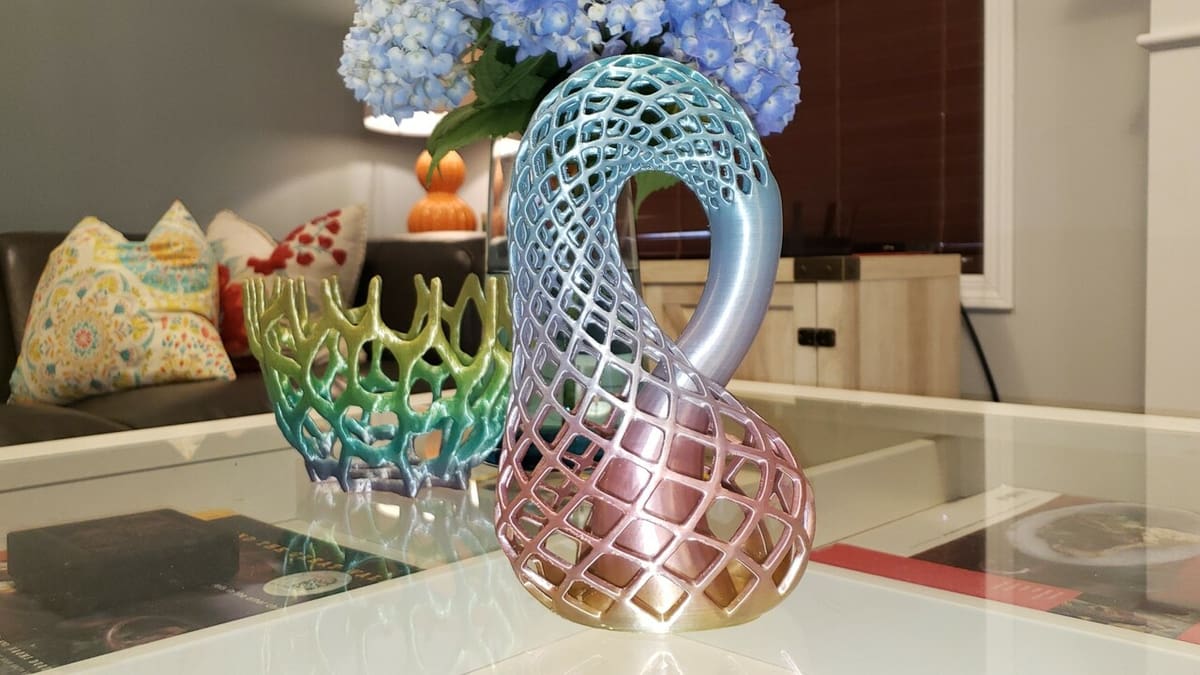
This vase was inspired by a Klein bottle, a geometric object that arose out of the mathematical field of topology. Its Klein bottle shape, accented with a web-like structure, has been modified so that it can function as a vase.
The designer recommended using no supports, 10% infill, two shells, and a brim, which will help with bed adhesion. Given the vase’s shape and the presence of overhangs, make sure to check your cooling settings before printing it.
- Who designed it? CreateCafe3D
- How printable/popular is it? This model has over 11 community prints, 96,500 views, and over 19,700 downloads.
- Where to find it? MyMiniFactory
Voronoi
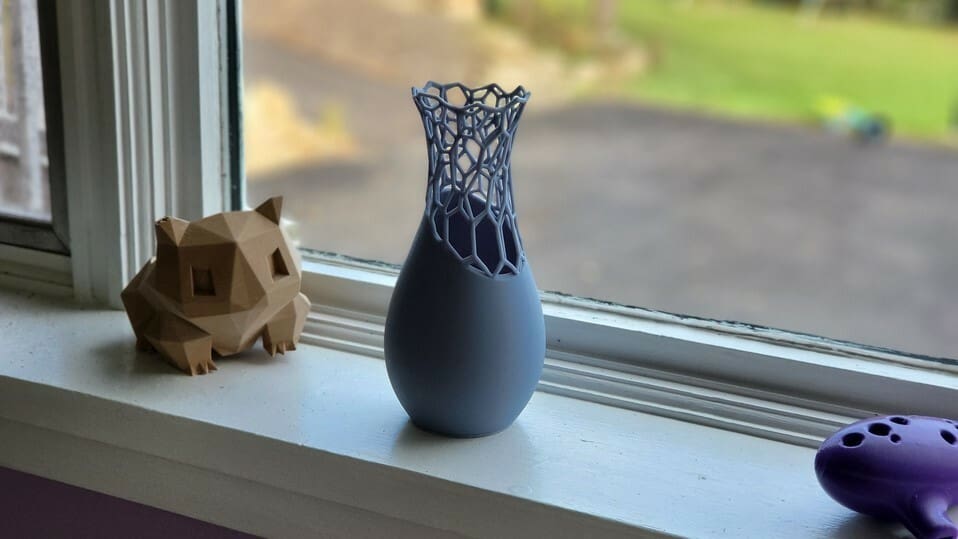
The upper half of this vase has the appearance of a Voronoi pattern, which is a tessellated structure based on a mathematical partition of a plane. Voronoi patterns are popular in 3D design.
The bottom half of the vase is solid, making the model more structurally sound. The Voronoi part can be printed in a different color than the base, which will give the vase a nice contrast, adding even more flair to an already stunning design.
Vases with this contrasting aesthetic can be seen in Area3dStudio’s gold and black vase or JohnWardell’s orange and gray vase.
- Who designed it? Area3dStudio
- How printable/popular is it? This vase has been downloaded almost 30,000 times, and it has over 250 makes and 12,200 likes combined from the sites.
- Where to find it? MyMiniFactory, Printables, Thingiverse
Transition
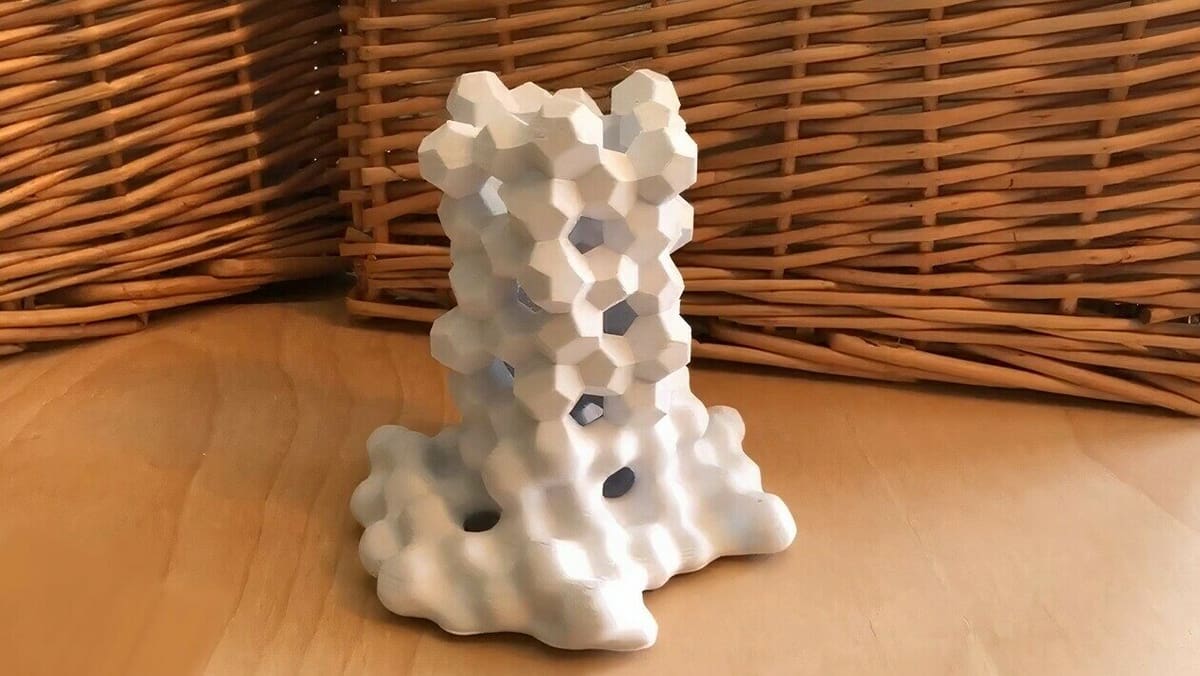
This transition vase takes inspiration from the Weaire–Phelan structure – also a source of inspiration for the 2008 Beijing Olympics’ Water Cube. In simple terms and without getting too technical about it, this structure was a solution to a geometric problem.
As you can see from the vase’s design, it looks like it’s melting or “transitioning” from solid to liquid. This is how it gets its name, the “Transition Vase”. There are no printing instructions, but the model is a single piece, so printing it shouldn’t be an issue.
- Who designed it? DaveMakesStuff
- How printable/popular is it? With over 1,000 downloads, more than 392 likes, and 3 successful makes, this vase is pretty popular.
- Where to find it? Thingiverse
Extruded Fractal Flake
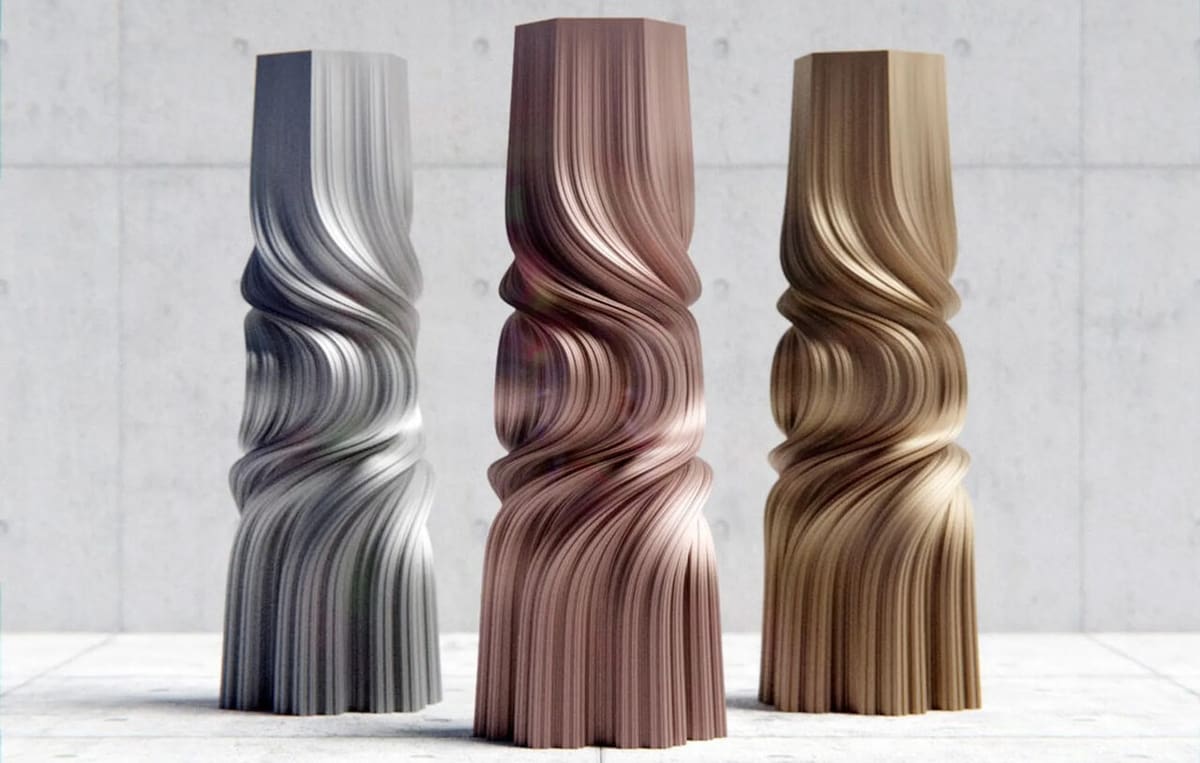
This design has been around since late 2021, and plenty of people have shown off their attempts at printing it. We must say, the community has printed this vase with some cool filament choices – the rainbow options being especially noteworthy given the height of the design. It’s almost like it was made for multicolor filament with all of those ripples, twists, and turns.
The creator was able to make the geometry using Rhino3D and Grasshopper. They point out that this is a variation of the Koch curve with hexagons, which changes in rotation and fractal depth along the extruded direction. As a predecessor to another vase the creator made, we think they hit this design out of the park.
- Who designed it? alecsform
- How printable/popular is it? This print has garnered 100 makes and over 5,000 downloads, and we can understand why.
- Where to find it? Printables
Special
These vases are unique – in short, they don’t look like your traditional vase, and they don’t really fit in any of our previous categories. However, we simply couldn’t leave them off the list.
Paper Bag
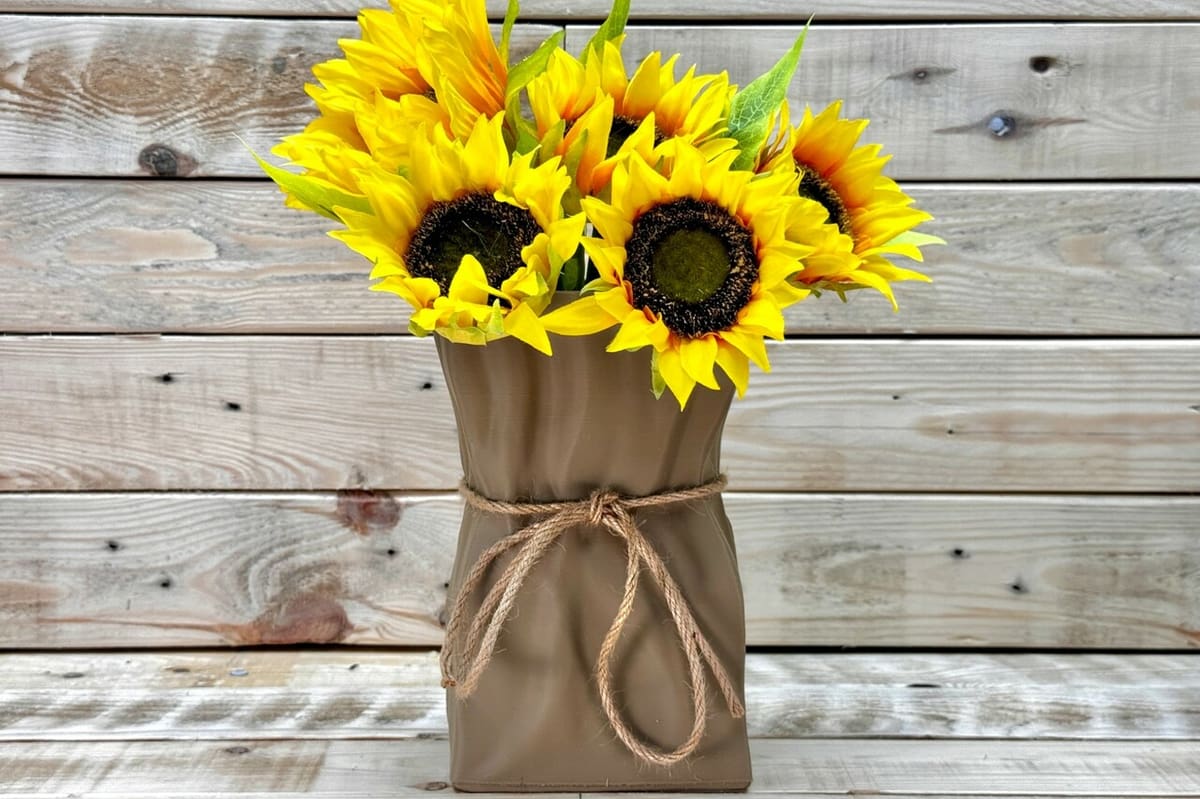
The “Paper Bag Vase” model is a different choice for those looking for a unique and personalized piece of decoration to print in 3D. With a design that imitates the simplicity and rusticity of a paper bag, this piece stands out for its ability to transform any environment with a touch of charm and authenticity. Adding a bow or ribbon further enhances the visual effect, making the vase a standout piece in any room.
It’s a perfect option for both amateur and professional decorators who want to explore the versatility of 3D printing in creative projects. When it comes to printing recommendations, a 0.2-mm layer height, three walls, and 10% infill are indicated. The designer also recommends coating the interior with varnish to prevent leaks.
- Who designed it? Enique3d
- How printable/popular is it? This simple and creative vase has already been downloaded 193 times and takes almost 8 hours to complete.
- Where to find it? MakerWorld
Coiled Rope
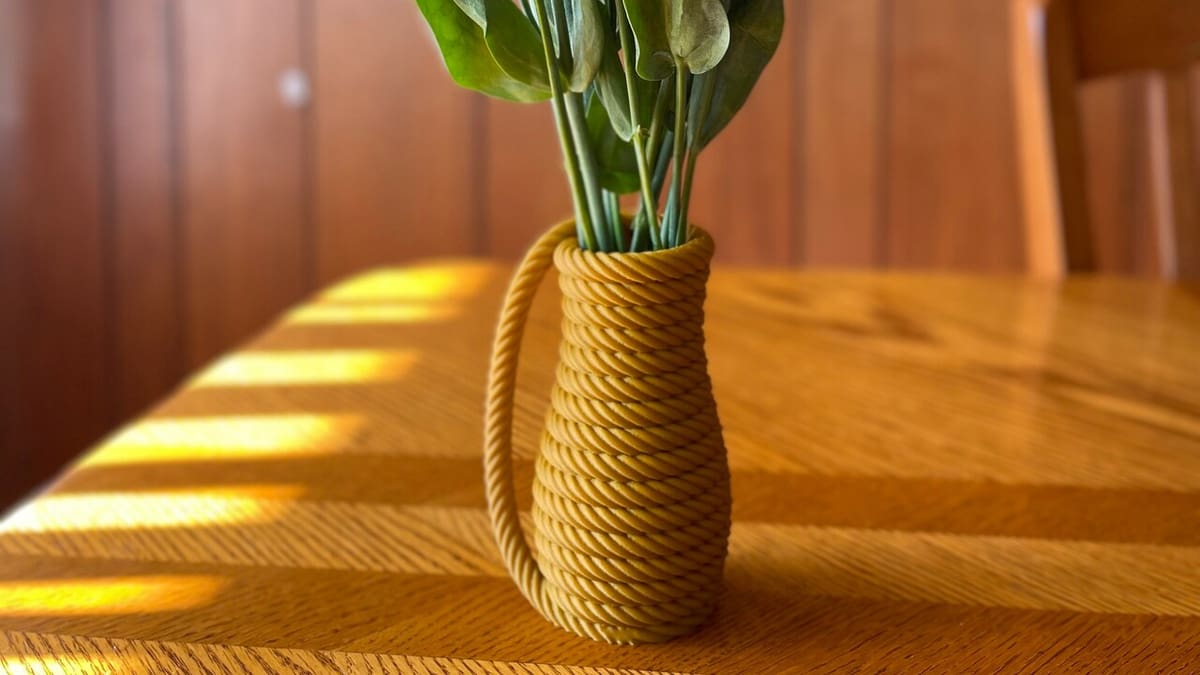
If you’re looking for something different to make your living room more interesting, a vase imitating coiled ropes is sure to make an eye-catching addition. You’ll also find a second, shorter version resembling a beer mug and bowls in three different sizes in the model’s description.
To make the vase look as close as possible to rope, use a filament in a similar color. In this case, the Mukha filament from Fillamentum was used. Unfortunately, there are no details regarding the print settings, so it’s essential that your printer is well calibrated when attempting to create this vase. Check out the video for a closer look!
- Who designed it? DaveMakesStuff
- How printable/popular is it? This incredible vase has been downloaded more than 20,000 times and 30 makes have been shared.
- Where to find it? Thingiverse
Ghost
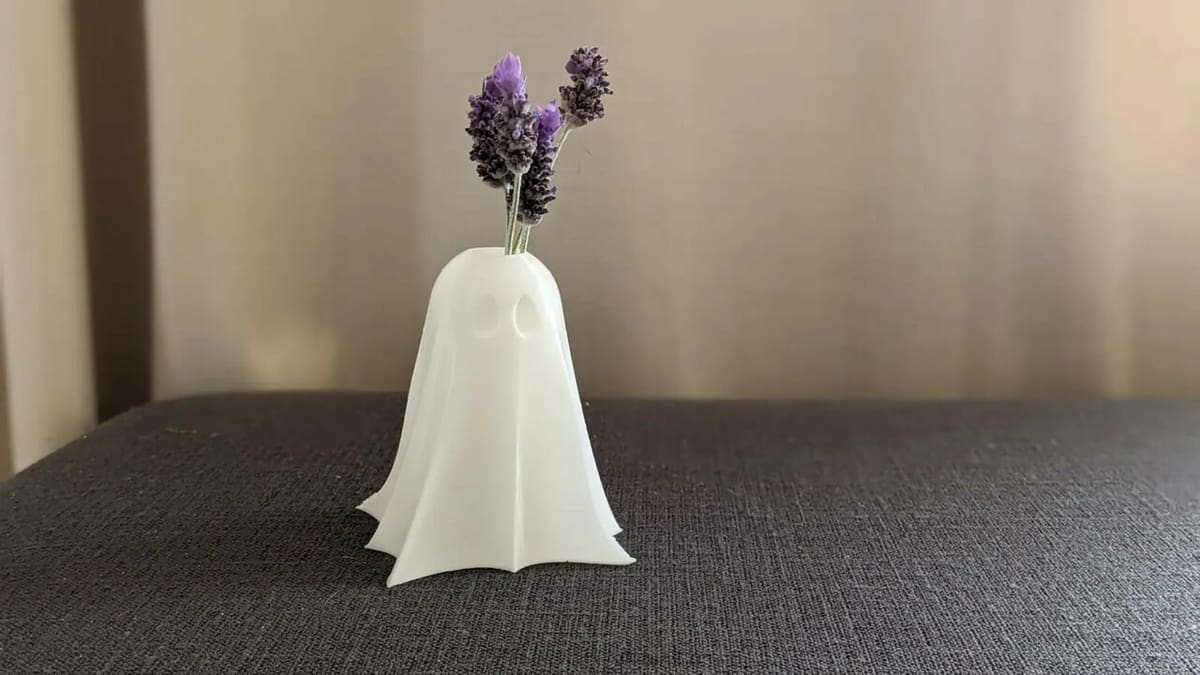
Not all little ghosts are terrifying and spooky, right? This one, for example, is friendly. It looks lovely with some flowers, and is sure to be a welcome decoration to your home, especially during Halloween.
The author’s inspiration was to put a ghost-shaped balloon model underneath a sheet for a vase contest. They used the vase mode setting and recommend using a layer height of 0.16 to 0.2 mm. And if this design alone isn’t enough, use some glow-in-the-dark filament for that extra touch.
- Who designed it? Bencham95
- How printable/popular is it? 546 downloads and 6 beautiful makes make it clear that this design is quickly becoming a popular choice.
- Where to find it? Printables
Groot
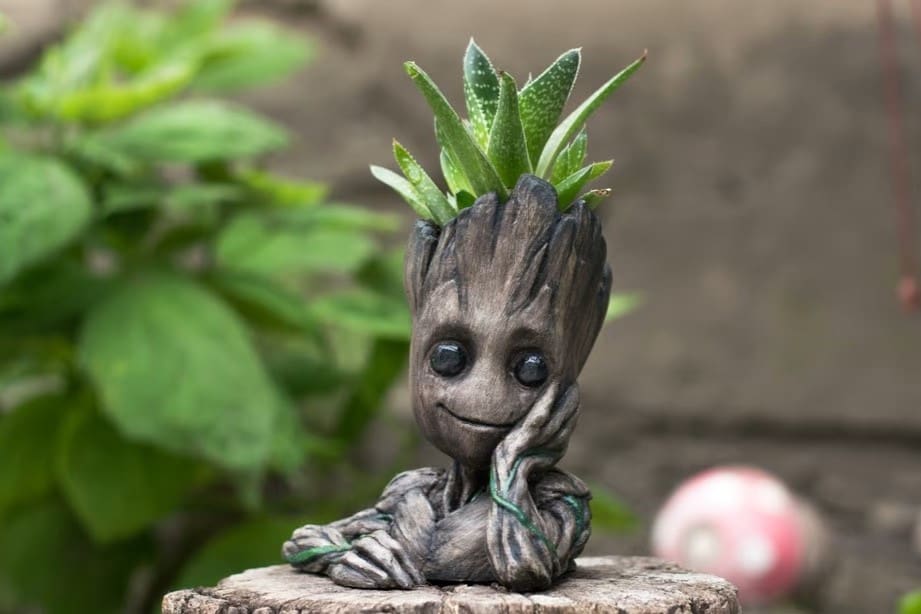
Groot is the tree-like character – technically a Flora colossus – from Guardians of the Galaxy, and this young Groot vase makes for fun desk decor. The design has many details on the outer surface, including cracks and crevices similar to Groot.
One community maker shared a great print of the vase and listed a few of their settings. They used a 0.1-mm layer height to print the model in PLA with supports activated.
- Who designed it? 3DofTom
- How printable/popular is it? This Groot vase has well over 150 community prints and more than 99,900 downloads. So many makers have successfully printed this vase; you can be next!
- Where to find it? MyMiniFactory
Lace-Up Tiles
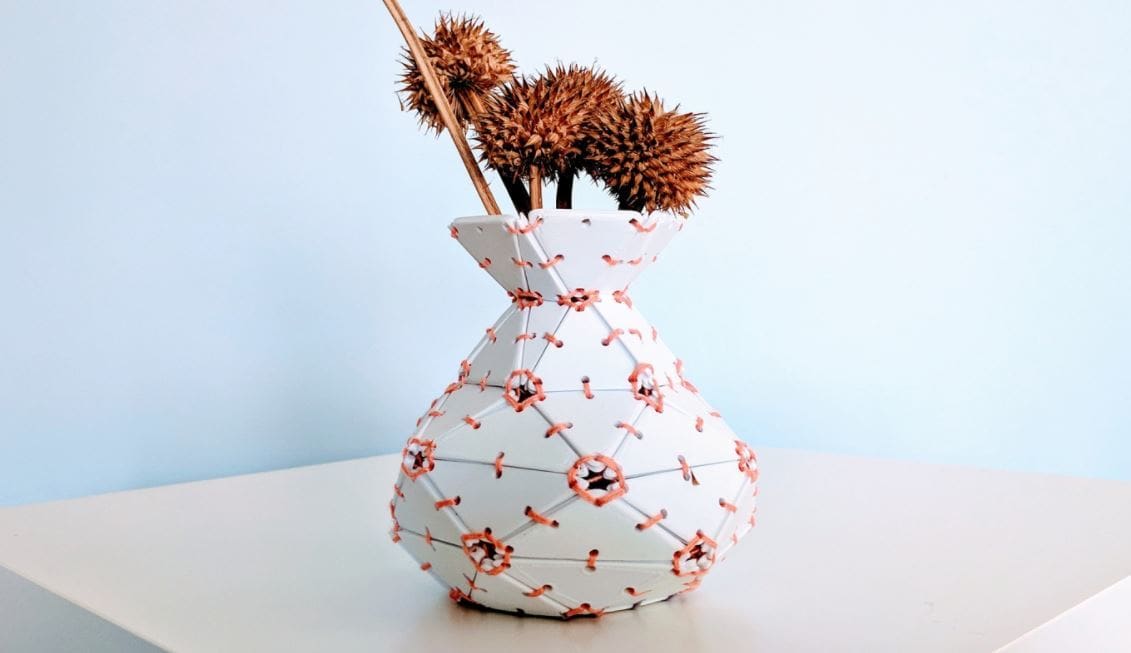
Vases are usually a single shape, but this design uses tiles that you can lace up to make the final vase, yielding a cool look. Designed in Vectary, the model incorporates different-sized triangles that lace together around a hexagonal base. You can use a thread or small rope to tie the different parts together.
As you might expect, this vase isn’t very effective for holding water, but it will look great full of dried flowers or even holding utensils in your kitchen! While there are no printing tips other than that the model is support-free, the designer states that the print is easy, but assembly might take a while.
- Who designed it? Clockspring
- How printable/popular is it? The lace-up tile vase has over 17,300 views with more than 880 downloads.
- Where to find it? MyMiniFactory
Low-Poly Heart
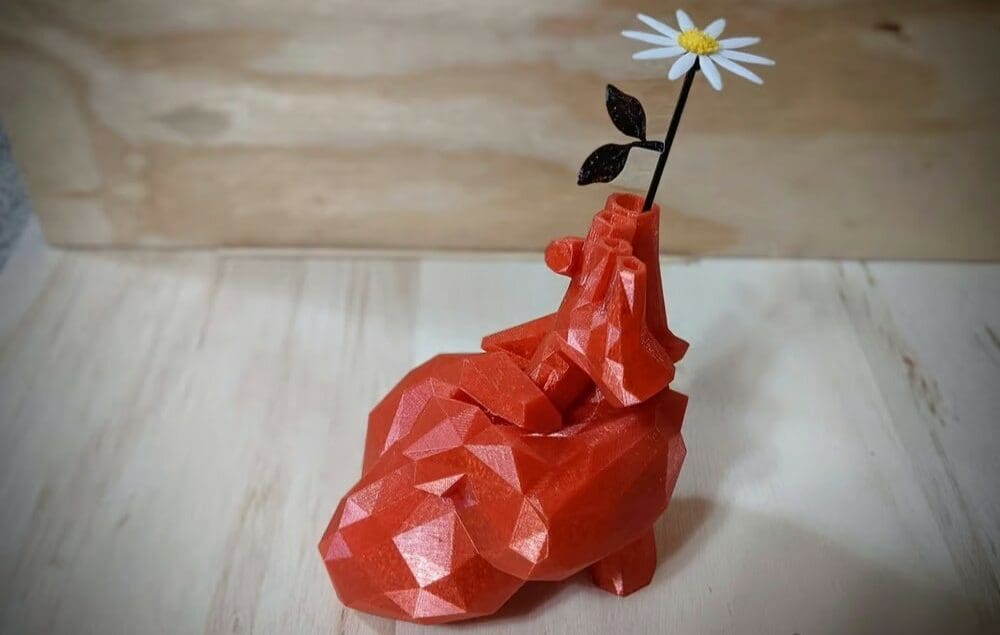
This vase is unique in many ways, and will definitely turn some heads. It makes us question what inspired this design in the first place. Whether that’s for a good or gross reason depends on the person. Love or leave it, we can’t help but think that this would be a great gift for a heart surgeon’s desk.
One maker noted that they printed the heart in PETG with supports and 15% infill. It took 29 hours to print!
- Who designed it? Vectary
- How printable/popular is it? With 37 makes and a remix, many people have proved they’re not faint of heart.
- Where to find it? Thingiverse
Octopus
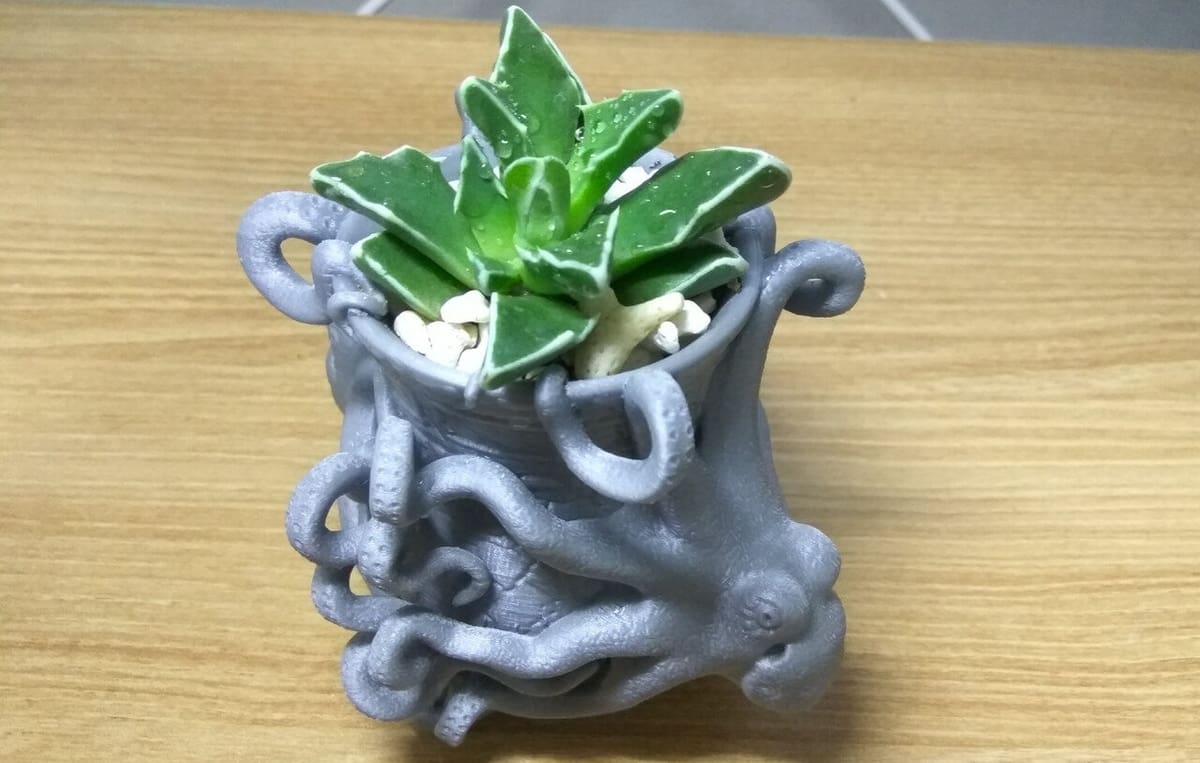
The swashbuckler in all of us is yelling “Aye!” right now. Since we adore this wonderful design, we have to wonder what mysteries the octopi are protecting. Maybe it’s a freshly potted plant or buried treasure.
The creator of this piece was nice enough to provide five different levels of quality for the print, depending on your printer’s capabilities. Quite a lot of support will be needed for this print to succeed, but overall we think it’s worth the time.
License: The text of "30 Beautiful 3D Printed Vases (Incl. Print Files)" by All3DP is licensed under a Creative Commons Attribution 4.0 International License.





